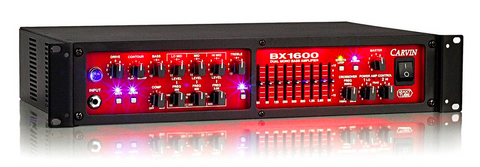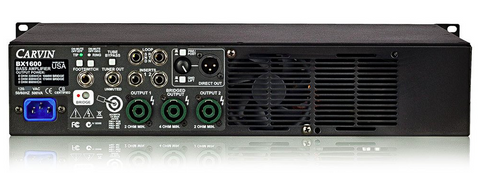-
Audio
-
Guitar
-
Bass
-
Blog
-
SALE
- Financing
- Support
- SINCE 1946
July 12, 2017
In a perfect world, sound engineers at every venue would ask bassists whether they prefer to go DI or have their cab miked up. While many sound engineers do take player preference into account, the fact of the matter is that for small local shows where five bands are on the bill, many engineers understandably stick with one method for all the bands to make the in-between set transitions as smooth and fast as possible.
For bassists who use distortion, using a DI setup has its own share of drawbacks, despite a DI being a perfectly suitable and universally acceptable solution for bass. As we discussed in a previous article, sending an overdriven bass signal through a DI can result in a harsh sound as the preamp and speaker itself both work to round out the overdriven signal and roll off highs. Miking the cab is a quick remedy to this, but that may not be an option at every venue.
However, with some craft, fuzz-wielding bassists can have their cake and eat it too, even if they have to go DI. Here are some tips to follow if you find yourself stuck between your distortion pedal and a DI box.
1. Use a separate EQ or preamp after your dirt pedal. Doing so will help you further shape the signal of your distortion pedal, letting you dial in less high end and making other equalization and gain adjustments if needed. Some boxes come equipped with a speaker simulator switch, which will basically roll off high frequencies in your signal so they don’t come through the front of house, making your overall tone warmer.
2. Use your amp’s POST-EQ switch and built-in DI. If your amp has these two components available, you’re in business. Using the POST- EQ switch will put the DI signal after your equalization, so you can use the preamp to adjust your distorted signal just as you would if you were miking up the cab. Of course, it won’t sound exactly like a miked up cab, but combining this method with a preamp pedal will get you pretty close.
This setup also completely eliminates the need for a DI box.


PRE/POST EQ switch and Direct Out: Distortion-friendly options abound on Carvin Audio’s BX1600 Bass Amplifier.
3. Roll off your tone knob a tad. Sometimes simply using your bass’s onboard tone controls can work wonders in making your distortion tone more DI-friendly. While this method isn’t as useful if you switch between clean and distortion often, as it may make your clean tone slightly muddy, it can do a lot of good if you have an always-on overdrive tone.
October 02, 2025
Discover the features and performance that the WG6 Wireless Guitar/Bass System has to offer. The WG6 Wireless Guitar/Bass System is designed to give you the wireless freedom you have been looking for and the simplicity to make your life as a working musician easier. Advanced wireless technology, multiple channel capability, premium audio processors make the WG6 the leader in compact wireless instrument systems. Defined and detailed low frequency response makes this system especially useful for bass players. The WG6 works with both active and passive instruments and is perfect for both electric and acoustic guitar/bass.
March 28, 2025
At any time at any gig, something is bound to go wrong and you may need a tool to get you back up and running. Here are a few basic tools you should bring to every gig.
January 09, 2025
I once asked blues legend Walter Trout why he still plays his well-worn vintage Strat. The technology exists to digitally scan the guitar and make very accurate replicas. His response was he could leave it at home, but then it will never be played. Plus, someone could steal it from his home. At least the guitar is with him and he has the pleasure of playing it. But this may not be the same for everyone.
Sign up to get the latest on sales, new releases and more…
NoFraud Frequently Asked Questions
"Make a joyful noise unto the Lord all of the earth; make a loud noise and rejoice and sing praises. Sing to the Lord with the harp and the voice of the psalm." - Psalm 98:4-5
© 2025 Carvin Audio.
Carvin Corp.
POS and Ecommerce by Shopify
